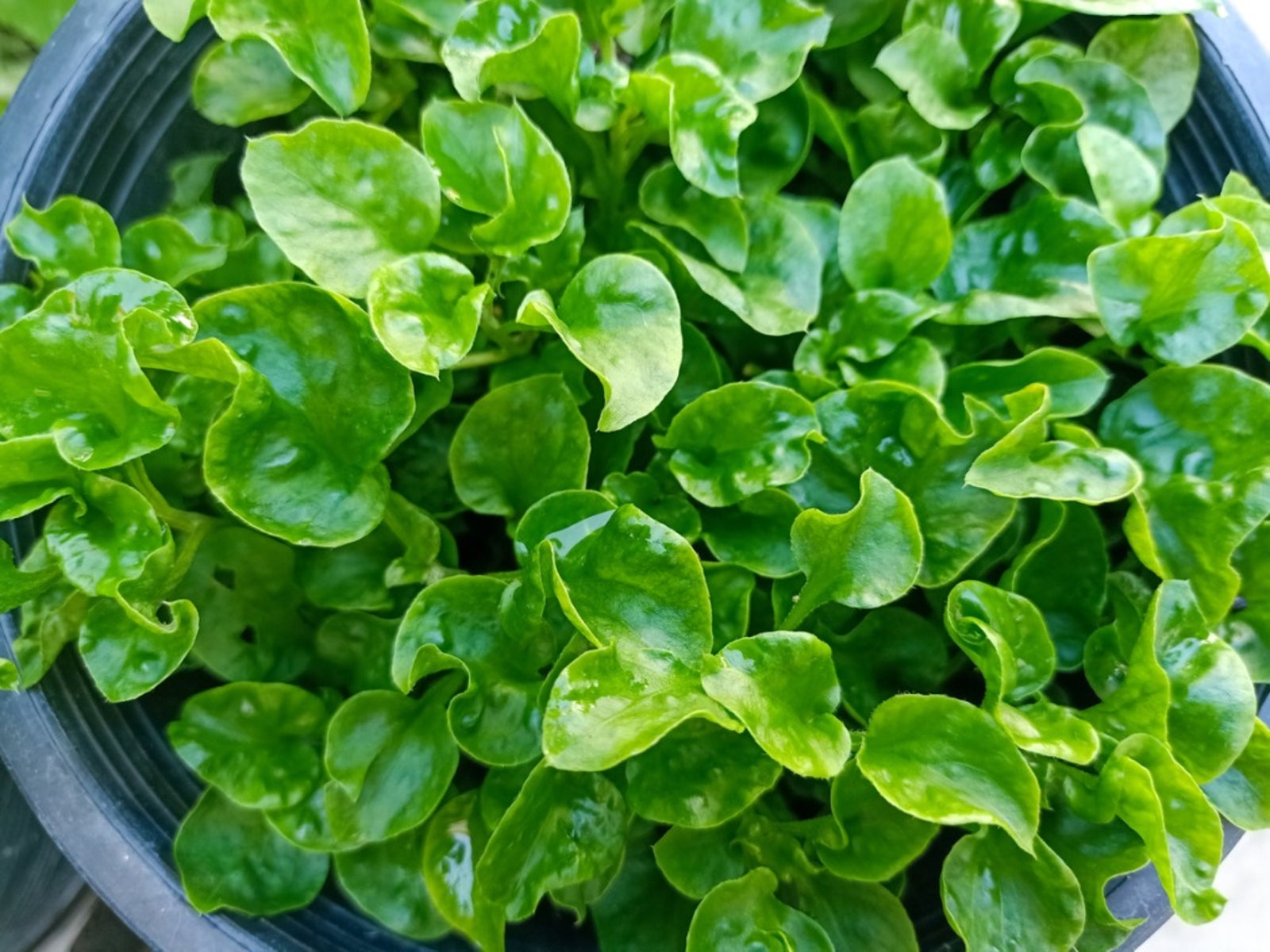Container Watercress Herbs: How Do You Grow Watercress In Pots

Watercress is a sun-loving perennial that grows along running waterways, such as streams. It has a peppery taste that is delicious in salad mixes and is especially popular in Europe. Watercress is high in iron, calcium, and folic acid and is also rich in vitamins A and C. If you love the flavor of this green, you may be wondering if you can grow container watercress herbs and, if so, how do you grow watercress in pots?
How Do You Grow Watercress in Pots?
If you have a water feature in the garden, it is a great place for growing watercress in containers, as you are able to mimic the native watery conditions in which cress thrives. You may also grow container watercress herbs in a bucket with 2 to 3 inches (5-7.5 cm.) of water, allowing the soil to stay saturated. The key is to keep the roots submerged under water. The water should be changed once or twice a week. While watercress will do well in a variety of soil conditions, its ideal range is between a pH of 6.5-7.5. Potted watercress plants should use a soilless mix containing perlite or vermiculite combined with peat. Use a saucer beneath the plant and keep it filled with water to provide constant moisture. Watercress can be propagated via stem cuttings or sown from seeds. Sow the seed just below the surface, about ¼ inch (0.5 cm.), three weeks before the last frost-free date in your region. It is important to keep the soil of potted watercress plants moist or the plant will not germinate. Seeds can be germinated inside or out in cool, 50 to 60 F. (10-16 C.), and wet conditions. Space the plants 8 inches (20 cm.) apart when transplanting and place in a sunny outdoor area. Some recommended varieties of watercress are:
- Garden cress, Curly cress and Peppergrass (annuals)
- Winter cress (biennial)
- Big Leaf cress (perennial)
Care of Potted Watercress
Care of potted watercress is fairly simple, provided the plant is kept wet. Watercress doesn't have high nutrient needs, although it may become deficient in phosphorus, potassium, or iron. Phosphate deficiencies appear as stunted and dark colored foliage while potassium deficiencies create scorching on older leaves. Yellowing, often in winter, may indicate an iron deficiency. To combat these, mix a water soluble fertilizer in with the water according to the recommended rates. A few pests such as whitefly, spider mites, and snails may assault your potted watercress plants. Insecticidal soap can control whitefly and natural predators such as lady beetles, predatory mites, and thrips can control spider mites. Snails can be trapped or picked off by hand. The tiny, dime-sized leaves of the watercress can be harvested throughout the year. The flavor is best during the cooler months of the year and lessens in flavor once the plant has flowered or temps rise above 85 F (30 C.). Harvest watercress by cutting the plant back to 4 inches (10 cm.) and then allow it to re-grow. The leaves can be refrigerated for about a week but are best used fresh for culinary or medicinal purposes.
Sign up for the Gardening Know How newsletter today and receive a free copy of our e-book "How to Grow Delicious Tomatoes".

Amy Grant has been gardening for 30 years and writing for 15. A professional chef and caterer, Amy's area of expertise is culinary gardening.
